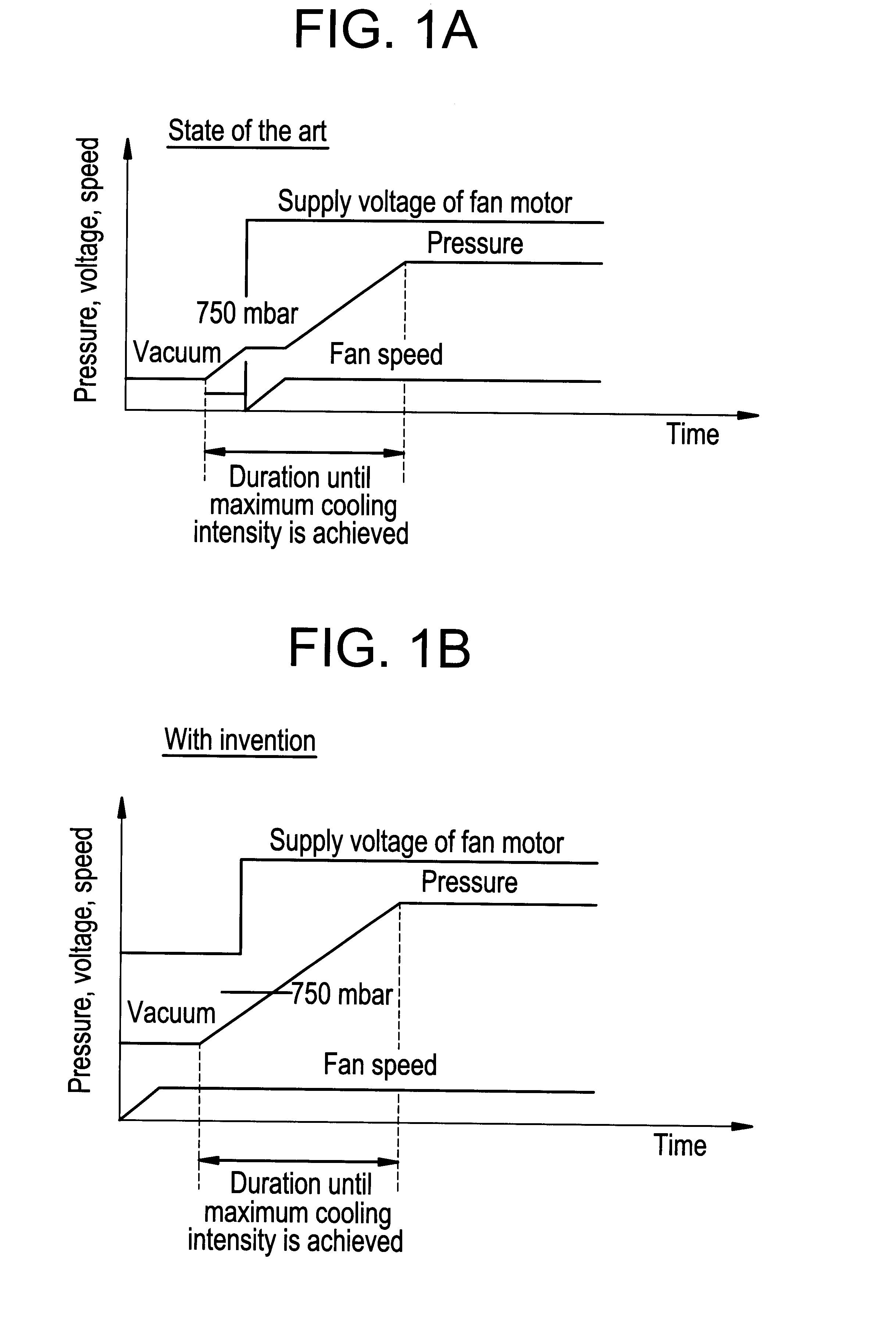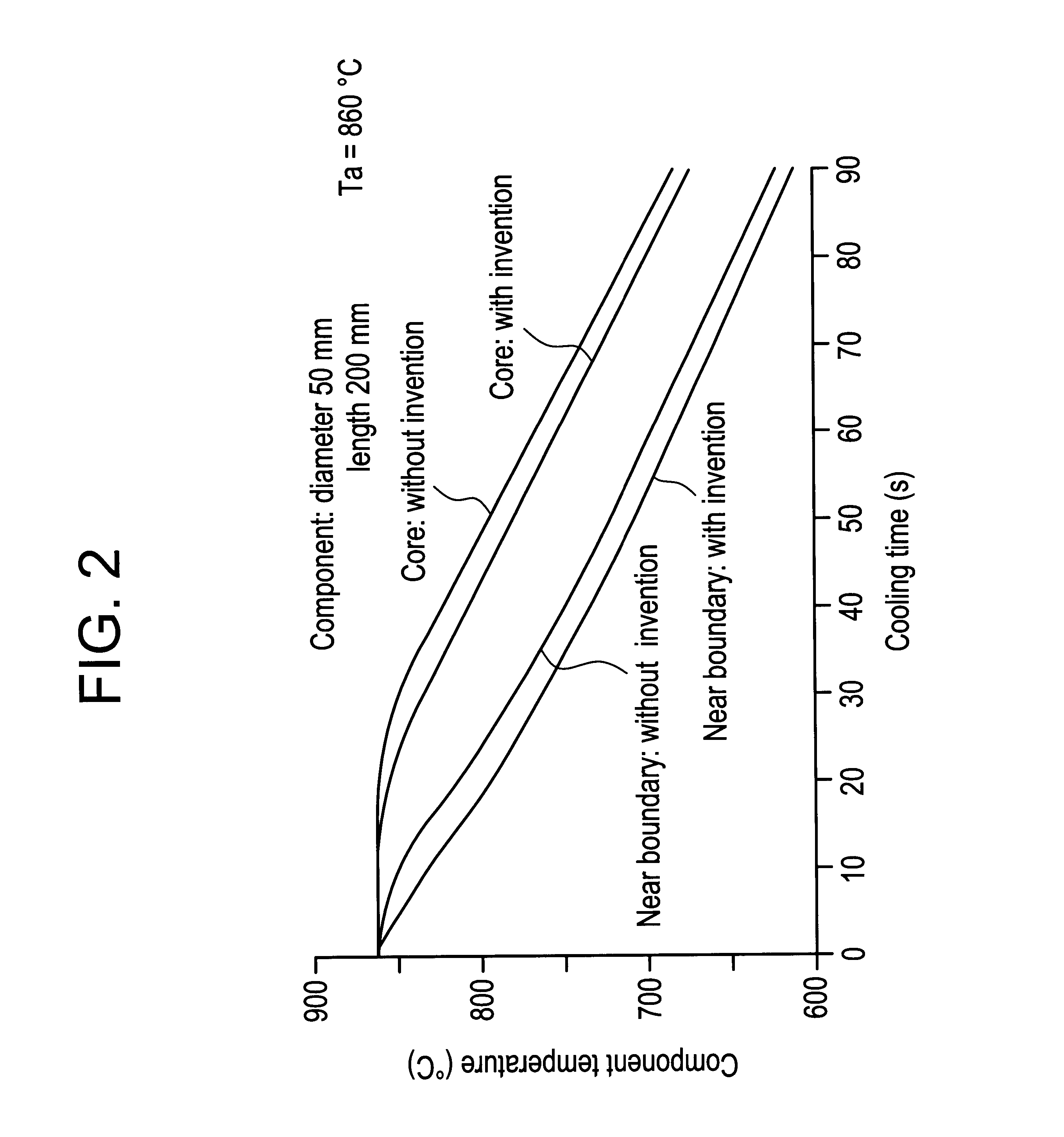Method for heat-treating metallic workpieces
a technology of heat treatment and workpieces, applied in the direction of furnace types, coatings, lighting and heating apparatuses, etc., can solve the problems of network interruption, high cooling gas pressure, complicated safety measures, etc., and achieve the effect of improving the quenching
- Summary
- Abstract
- Description
- Claims
- Application Information
AI Technical Summary
Benefits of technology
Problems solved by technology
Method used
Image
Examples
Embodiment Construction
Details and additional advantages of the object of the present invention result from the following exemplary description of a method for case-hardening metallic workpieces.
The case-hardening process serves for providing the boundary layer of metallic workpieces with a significantly higher hardness, i.e., for providing the entire workpiece with superior mechanical properties. For this purpose, the boundary layer is initially enriched with carbon and / or nitrogen depending on the required characteristics of use and subsequently quenched to room temperature or below from an appropriate hardening temperature. An acceptable case-hardening with respect to the procedural technology can be achieved if the carbonizing or carbonitriding as well as the subsequent hardening are carried out in a vacuum furnace that allows a simple exchange of gaseous heat treatment mediums.
After the workpieces to be treated are, for example, carbonized in the vacuum furnace, the hardening process can be included ...
PUM
| Property | Measurement | Unit |
|---|---|---|
| supply voltage | aaaaa | aaaaa |
| supply voltage | aaaaa | aaaaa |
| pressure | aaaaa | aaaaa |
Abstract
Description
Claims
Application Information
 Login to View More
Login to View More - R&D
- Intellectual Property
- Life Sciences
- Materials
- Tech Scout
- Unparalleled Data Quality
- Higher Quality Content
- 60% Fewer Hallucinations
Browse by: Latest US Patents, China's latest patents, Technical Efficacy Thesaurus, Application Domain, Technology Topic, Popular Technical Reports.
© 2025 PatSnap. All rights reserved.Legal|Privacy policy|Modern Slavery Act Transparency Statement|Sitemap|About US| Contact US: help@patsnap.com



